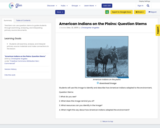
Teachers can use question stems to guide students through examining, analyzing, and interpreting primary source documents.
- Subject:
- American History
- History/Social Sciences
- Material Type:
- Assessment
- Primary Source
- Date Added:
- 11/28/2019

Teachers can use question stems to guide students through examining, analyzing, and interpreting primary source documents.
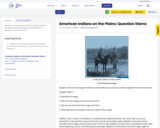
Teachers can use question stems to guide students through examining, analyzing, and interpreting primary source documents.
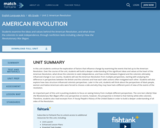
In this unit students continue the exploration of factors that influence change by examining the events that led up to the American Revolution. Over the course of the unit, students will build a deeper understanding of the significant ideas and values at the heart of the American Revolution, what drove the colonists to seek independence, and how conflict between England and the colonists ultimately influenced change in our country. Students will see the American Revolution from multiple perspectives, starting with analyzing the difference in perspectives between the British and the colonists and how each side's actions often instigated each other. Students will also explore how class structure influenced colonists perspectives. Later in the unit, students will think about the perspectives of black people, women and Native Americans who were forced to choose a side and why they may have had a different point of view of the events of the revolution.
An important part of this unit is pushing students to focus on seeing history from multiple different perspectives. The core text Liberty! How the Revolutionary War Began offers one perspective on events, however, the prespective is limited to that held by white elite colonists. Therefore, students also read excerpts from A Young People's History of the United States in order to build a deeper understanding of all sides of the Revolution.
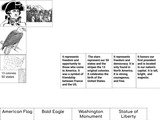
This assessment fulfills the requirements of a local alternative assessment for civics for the ASOL HS-C 2a.

A simple Python program to determine if two words are anagrams
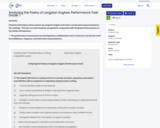
Students will analyze various poems by Langston Hughes and write a constructed response based on the readings. This task can and should be completed in conjunction with 7th grade history lessons on the Harlem Renaissance. ** This performance assessment was developed by a collaborative team of teachers and division staff from Middlesex, Poquoson, and West Point school divisions.
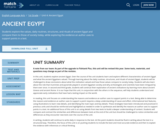
In this unit, students explore ancient Egypt. Over the course of the unit students learn and explore different characteristics of ancient Egypt and what the ancient Egyptians valued. Through learning about the daily routines, structures, and rituals of ancient Egypt, students will be challenged to draw conclusions about what the civilization valued and how those values compare to society today. Students will also learn about the role that mummies and pyramids played in ancient Egyptian society and why archeologists and scientists have been intrigued by them ever since. In second and third grade, students will continue their exploration of ancient civilizations by learning more about ancient Greece and ancient Rome. It is our hope that this unit, in conjunction with the others in the sequence, will help students understand and appreciate early civilizations that have had a lasting impact on the world.
In reading, this unit focuses on understanding the reasons and evidence an author uses to support points in a text. Being able to determine the reasons and evidence an author uses to support a point requires a deep understanding of cause and effect, informational text features, using illustrations to learn new details, and identifying the main topic and key details. These strategies have been introduced and practiced in previous units and should be reinforced and highlighted as needed in order to synthesize and identify the reasons an author uses to support points in a text. An additional focus of this unit is on using details from two texts to build a deeper understanding of content. Students will compare and contrast the similarities and differences between texts at the end of the unit but should be challenged to notice similarities and differences as they encounter new texts over the course of the unit.
In writing, students will continue to write daily in response to the text. At this point students should be fluid in writing about the text in a structured way. Therefore, the focus of this unit is on pushing students to include the best and most accurate evidence and then to explain the evidence with inferences or critical thinking.
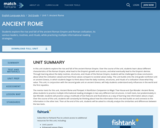
In this unit students explore the rise and fall of the ancient Roman Empire. Over the course of the unit, students learn about different characteristics of the Roman Empire, what lead to the Empire's growth and success, and what eventually lead to the Empire's demise. Through learning about the daily routines, structures, and rituals of the Roman Empire, students will be challenged to draw conclusions about what the civilization valued and how those values compare to societal values today. This unit builds onto the 2nd grade nonfiction unit on ancient Greece, in which students began to think about how the daily routines, structures, and rituals of a civilization show what they value. This unit, in conjunction with the second grade unit on ancient Greece, will help students understand early influences in the world and the first republics.
The mentor texts for this unit, Ancient Rome and Pompeii: A Nonfiction Companion to Magic Tree House and Eye Wonder: Ancient Rome, allow students to practice multiple informational reading strategies in two very different text structures. In both texts, but predominately in Eye Wonder, students will practice using a multitude of text features and illustrations as a way of learning new information about a topic. Over the course of this unit, students will constantly be thinking about how the information from one text builds on and connects to the information in the other text. Then at the end of the unit, students will be asked to critically analyze the similarities and differences between the two texts.

In this science-based unit, students begin their exploration of animals and animal adaptations. Using next generation science standards as a guide, students explore three main topics: how different animals use their body parts and senses in different ways in order to survive, the ways in which the behavior of different animal parents and offspring help the offspring survive, and the similarities and differences among individual animals of the same kind. This unit is part of a larger progression on understanding animals and the animal kingdom. In kindergarten, students learn about how animals meet their basic needs for survival and how that varies depending on the season. In second grade, students learn about different habitats and how animals in the habitat rely on the environment for survival. Then in third grade, students study animal adaptations and the different ways animals adapt in order to survive, especially when threatened by environmental changes. It is our hope that this unit, in combination with others in the sequence, will help students develop a deeper understanding of the animal kingdom and life science.
This unit includes a mix of read-aloud texts and shared-reading texts. Students will focus on different skills depending on the method in which the text is consumed. During read aloud, students will refine their skills in describing the connection between ideas and pieces of information, figuring out the meaning of unknown words, distinguishing between information provided by the pictures and information in the text, and identifying the reasons an author gives to support points in a text. During shared reading, students will predominately focus on identifying the main topic of a section of a text, retelling key details that match the main topic, and using text features to locate key facts and information. Because the shared reading days are meant to be student driven, not teacher driven, the target tasks are at a more accessible, independent level for students. There are also not a lot of key questions already planned for shared reading days. Questions should be written and spiraled in based on student needs and student reading levels.
In writing, this unit builds on the work students did in unit one. Students will continue to write daily in response to the text, with a focus on correctly answering questions and adding an inference or critical thinking.

A Presentational Group Writing in which level 3 students work individually, in pairs or groups to create a digital advertisement for a product of their choice using formal commands and impersonal subjunctive expressions
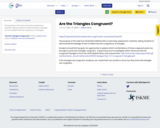
The purpose of this task is primarily assessment-oriented, asking students to demonstrate knowledge of how to determine the congruency of triangles.
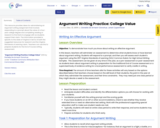
This resource provides ideas for administering an argument writing assignment that involves responding to a prompt about the value of a four-year college degree and completing reading or research to find facts to engage with as students support their claim. The information provided is specific to the state of Virginia in terms of both the suggested resources for research and the Virginia Standards of Learning rubric. Teachers can use this to prepare students for the End of Course writing assessment.
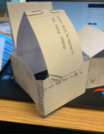
Students practice argumentative writing by building a house to show a strong thesis, reasons, and examples.

The resource has been developed to support divisions in the development of a balanced assessment plan.
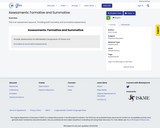
This is an assessment resource. Providing both Formative and Summative assessments.

I love this activity, and I think it is a great instructional resource for students to learn about atomic structure and counting atoms in compounds. However, I would like to add a single modification.MODIFICATION: Add the following question: How are atoms of one element different from the atoms of a different element? This resource is designed to accompany students notes, texts, and other instructional resources and provide a means to review what they have learned about atomic structure and counting atoms in compounds.

Students will read a variety of texts to include Fiction and Literary Nonfiction, Poetry, and Expository Nonfiction to complete the following tasks:1) read and annotate both a fiction and nonfiction paired passage2) complete the Author's Craft Graphic Organizer for each text.3) write a paragraph comparing and contrasting the two texts using the graphic organizer for guidance.

Students examine the characterization of a character in a novel or short story to complete the "Autopsy of a Protagonist" slideshow.
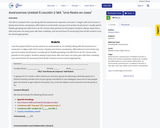
This skit is a project that I use along with the Avancemos 1 Spanish curriculum. It aligns with Unit 5 Lesson 2 (party and chores vocabulary, affirmative tú commands, hay que and acabar de phrases). I usually opt for flexible grouping and allot five to six 55-minute class periods for this project. Students always enjoy these skits and wow me every year with their creativity. Just remind them (if necessary) that all skit content must be school appropriate.
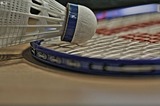
Badminton Lesson1. Lesson Plan (serve, overhead clear and drop shot)2 UGA inforamtional video and info sheet 3. Quiz on Badminton